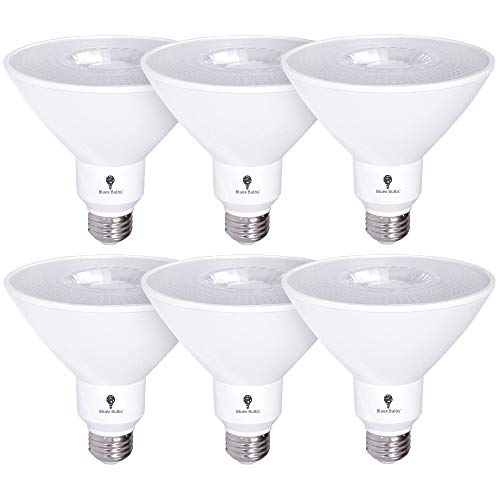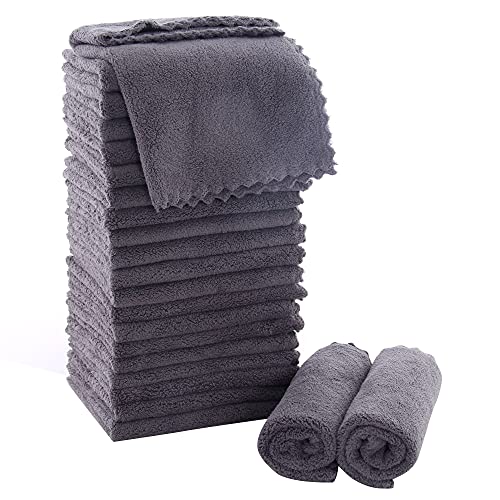Hey there! Are you a fan of LED floodlights? I know I am! They’re not only energy-efficient and durable, but they also offer fantastic lighting for so many different occasions. But here’s the thing – like any other lighting fixture, they need some love and care to keep shining bright. That’s why I’m here to share some valuable tips with you on how to maintain and extend the lifespan of your LED floodlights. Trust me, these tips will help you make the most out of your investment and keep your space well-lit for years to come. So, let’s dig in and give those LED floodlights the TLC they deserve!
Discover the top-rated LED floodlights that brighten any space with efficiency and style
Understanding LED Floodlights
LED floodlights are a popular lighting choice for both residential and commercial purposes. They are widely known for their energy efficiency, long lifespan, and versatility. In this section, we will delve into the technology behind LED floodlights, explore their benefits, and explain why proper maintenance is crucial.
How do LED floodlights work?
LED floodlights utilize light-emitting diodes (LEDs) to produce bright and powerful illumination. These diodes are semiconductor devices that emit light when an electric current passes through them. Unlike traditional incandescent or fluorescent bulbs, LEDs do not rely on heat to generate light, making them more efficient and durable.
LED floodlights consist of several LED chips, which are mounted on a circuit board. These chips are made from different semiconductor materials, such as gallium arsenide or gallium nitride. When an electrical current is applied to the diodes, they emit photons, creating visible light.
Benefits of LED floodlights
- Energy efficiency: LED floodlights consume significantly less energy compared to traditional lighting options. They convert more electrical energy into light, minimizing wastage and reducing electricity bills.
- Long lifespan: LED floodlights have an impressively long lifespan, typically lasting up to 50,000 hours or more. This means less frequent replacements and lower maintenance costs over time.
- Durability: LED floodlights are built to withstand harsh environments and external impacts. They are resistant to vibrations, shocks, and temperature variations, making them ideal for both indoor and outdoor applications.
- Instant illumination: Unlike traditional bulbs that require time to reach full brightness, LED floodlights provide instant illumination. This feature is especially useful in situations where immediate lighting is needed, such as security lighting or outdoor events.
- Directional lighting: LED floodlights can be designed to provide directional lighting, allowing you to focus the light where it is needed. This makes them perfect for highlighting specific areas or objects in a scene, such as architectural features or outdoor signage.
- Customizable color temperature: LED floodlights offer a range of color temperatures, from warm white to cool white. This versatility allows you to create the desired ambiance or match the lighting to your specific needs.
Importance of proper maintenance
Proper maintenance of LED floodlights is essential for maximizing their lifespan and maintaining optimal performance. Here are a few reasons why:
- Dust and debris accumulation can lead to reduced brightness and efficiency.
- Regular cleaning helps prevent the buildup of dirt and grime on the lens, ensuring optimal light output.
- Inspecting electrical connections and wiring mitigates the risk of potential hazards or malfunctions.
- Repairs or component replacements can be promptly addressed, minimizing downtime and maintaining consistent lighting.
By investing time and effort in the maintenance of your LED floodlights, you can ensure their longevity and continue to benefit from their energy efficiency and reliability.
Remember, the specific maintenance requirements may vary depending on the brand or model of your LED floodlights. Always refer to the manufacturer’s guidelines for the best practices and recommendations.
In conclusion, understanding LED floodlights involves comprehending their technology, recognizing their benefits, and acknowledging the importance of proper maintenance. By choosing LED floodlights and taking care of them, you can enjoy long-lasting, energy-efficient lighting solutions for years to come.
Regular Cleaning and Inspection
LED floodlights are a popular choice for illuminating outdoor areas due to their energy efficiency and long lifespan. However, like any other lighting fixture, they require regular cleaning and inspection to ensure optimal performance and longevity. In this blog section, we will explore the importance of regular maintenance for LED floodlights and provide practical tips to help you keep them in top condition.
Why Regular Cleaning and Inspection Matter
Regular cleaning and inspection play a crucial role in maintaining the functionality and lifespan of your LED floodlights. Here are a few reasons why you shouldn’t overlook this important aspect of maintenance:
- Dust and debris: Over time, outdoor floodlights accumulate dust, leaves, and other debris, which can obstruct the light output and affect the overall performance of the lights. Regular cleaning helps to remove these obstructions and ensures optimal brightness.
- Insects and pests: Outdoor lights tend to attract insects, which can build nests or leave residue on the lens or the internal components of the floodlights. Inspecting and cleaning your floodlights help prevent these issues and maintain their effectiveness.
- Weather effects: Exposure to harsh weather conditions, such as heavy rain, snow, or extreme temperatures, can cause damage to your LED floodlights. Regular inspections allow you to identify any signs of wear and tear and address potential issues before they worsen.
Cleaning Tips for LED Floodlights
Cleaning your LED floodlights is a straightforward process that can greatly enhance their performance and aesthetics. Here are some practical tips to guide you:
- Switch off the lights: Before starting the cleaning process, make sure to turn off the power to prevent any accidents or electric shock.
- Remove dust and debris: Use a soft, dry cloth or a brush to gently wipe away dust and debris from the surface of the floodlight.
- Clean the lens: If the lens is dirty, you can clean it with a mild soap solution and a soft cloth. Avoid using harsh chemicals or abrasive materials that may scratch or damage the lens.
- Check the electrical connections: Inspect the wiring and connections for any signs of damage or loose connections. If you notice any issues, it’s best to contact a qualified electrician for assistance.
- Inspect for water damage: LED floodlights are designed to be weather-resistant, but it’s still crucial to check for any signs of water damage, such as condensation inside the housing. If you find any, it’s advisable to seek professional help to address the issue.
Identifying Potential Issues and Damages
Regular inspections can help you identify any potential issues or damages that may affect the performance of your LED floodlights. Here are some key points to consider during your inspections:
- Check for flickering: If your LED floodlights are flickering or dimming, it may indicate a problem with the power supply or the internal components. In such cases, it’s best to consult with a professional to diagnose and fix the issue.
- Look for discoloration: Discoloration or yellowing of the lens can affect the quality of light output. If you notice any discoloration, consider replacing the lens to maintain optimal brightness.
- Inspect for cracked or damaged housing: The housing of your floodlights should be intact and free from cracks or damages. Any compromise in the housing can expose the internal components to the elements, leading to reduced performance and potential safety hazards.
Utilizing these tips and conducting regular cleaning and inspections will help maximize the lifespan and functionality of your LED floodlights, ensuring they continue to provide excellent illumination for your outdoor spaces.
Remember, proper maintenance is key to avoiding costly replacements and ensuring the longevity of your LED floodlights. By following these simple steps, you can enjoy the benefits of well-maintained floodlights for years to come.
We hope this guide has been helpful in understanding the importance of regular cleaning and inspection for LED floodlights. Feel free to reach out to us if you have any further questions or need assistance in selecting the right LED floodlights for your specific needs.
Proper Usage and Placement of LED Floodlights
LED floodlights are a popular choice for illuminating outdoor spaces due to their energy efficiency, durability, and versatility. However, to get the most out of your LED floodlights, it is important to understand the proper usage and placement. In this section, we will guide you through the key factors that can impact their lifespan and provide guidelines on choosing the right location and settings.
Factors Affecting Lifespan
Voltage
One crucial factor to consider is the voltage of your LED floodlights. Operating the lights at a voltage higher than their recommended range can significantly reduce their lifespan. Conversely, running them at a lower voltage can also lead to performance issues and premature failure. Ensure that the voltage supplied to your LED floodlights falls within the specified range provided by the manufacturer.
Temperature
Extreme temperatures can have a significant impact on the lifespan of LED floodlights. Excessive heat can cause the LEDs to degrade over time, while freezing temperatures can affect the functionality of the driver. It is essential to choose LED floodlights that are designed for the temperature range of your outdoor environment. Look for products that have a wide operating temperature range, such as the Philips Hue Outdoor Floodlight or the LITOM 160 LED Solar Motion Sensor Lights.
Humidity
Humidity levels can also impact the performance and longevity of LED floodlights, especially in areas with high moisture content or frequent rainfall. Opt for floodlights that have an IP (Ingress Protection) rating suitable for your outdoor environment. Outdoor LED floodlights, such as the Ring Floodlight Cam or the LEPOWER 3500LM Dusk to Dawn LED Security Lights, are designed to withstand various weather conditions and have higher IP ratings.
Choosing the Right Location
Selecting the proper location for your LED floodlights is crucial to both optimize their performance and increase their lifespan. Here are some guidelines to consider:
- Direction: Assess the area you want to illuminate and determine the best direction for the floodlights. Consider factors such as the desired coverage area, potential obstacles, and the specific purpose of the lighting.
- Mounting Height: Decide on an appropriate mounting height for your LED floodlights. Higher mounting positions can provide broader coverage, but may sacrifice some intensity. Additionally, consider accessibility for maintenance or adjustments if required.
- Obstructions: Take note of any obstructions that could cast shadows or interfere with the distribution of light. Position the floodlights to minimize interference and ensure consistent illumination.
Settings and Adjustments
To maximize the lifespan and optimize the performance of your LED floodlights, here are some settings and adjustments to consider:
- Sensor Settings: Many LED floodlights come with sensors that control their operation based on ambient light levels or motion detection. Adjust these settings to ensure they suit your specific requirements, minimizing unnecessary use or providing adequate security measures.
- Brightness Levels: LED floodlights often come with adjustable brightness levels. Experiment with different settings to achieve the desired illumination while minimizing energy consumption.
- Timer Settings: If you require the LED floodlights to operate for specific periods, consult the manufacturer’s instructions on setting timers, duration, and intervals.
By following these proper usage and placement guidelines, you can ensure the longevity and optimal performance of your LED floodlights in various outdoor environments.
Remember, always refer to the instructions and specifications provided by the manufacturer of your specific LED floodlight model for detailed guidelines and recommendations. Happy lighting!
Wrap It Up: Maximize the Life of Your LED Floodlights with These Simple Tips
In conclusion, following the tips outlined in this blog post will help you maintain and prolong the lifespan of your LED floodlights. By familiarizing yourself with the technology, regularly cleaning and inspecting them, using and placing them correctly, and knowing how to troubleshoot and fix minor problems, you can enjoy the benefits of effective illumination for an extended period. Remember, taking good care of your LED floodlights not only saves you money but also promotes a more environmentally friendly and sustainable approach.















